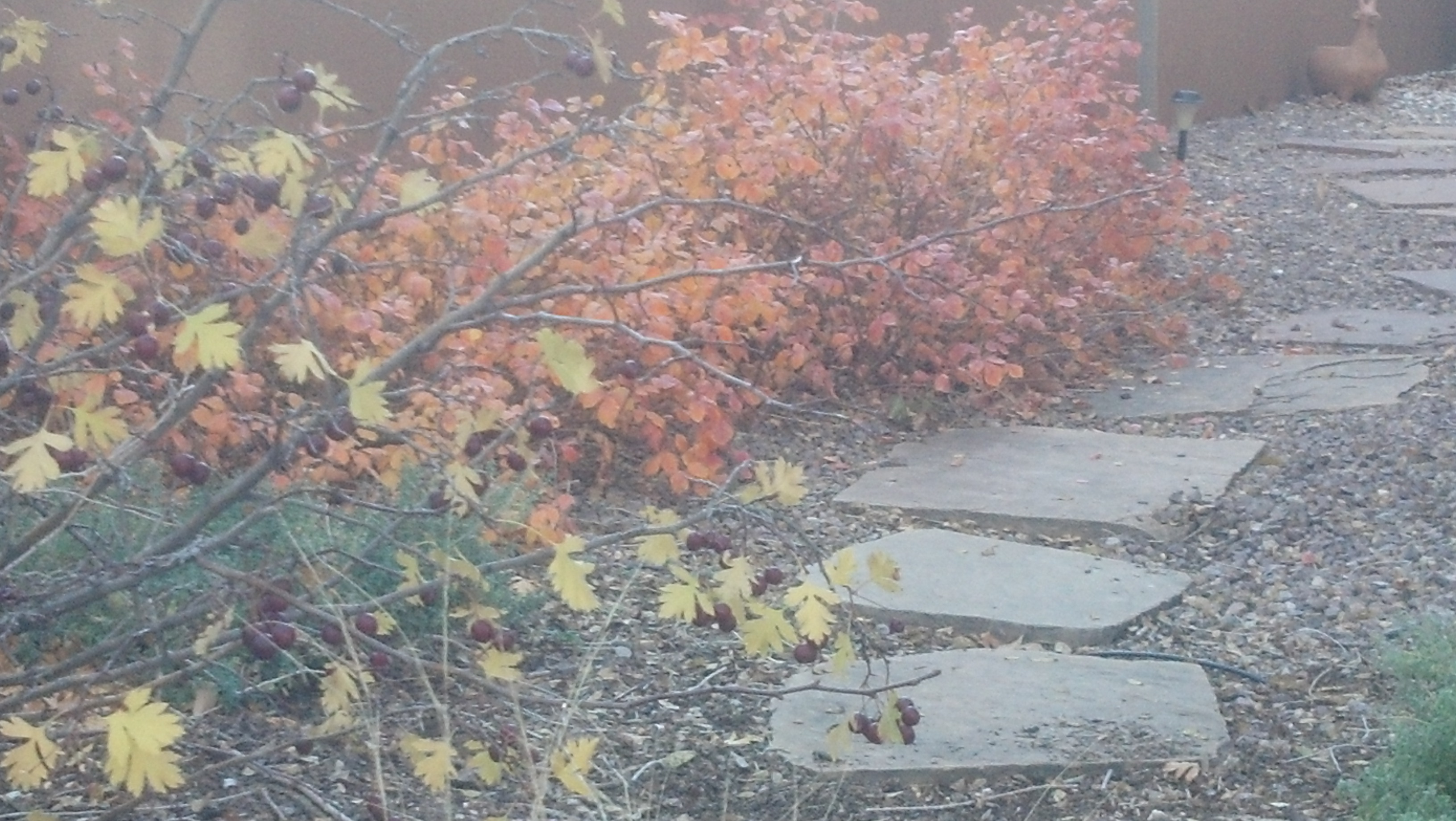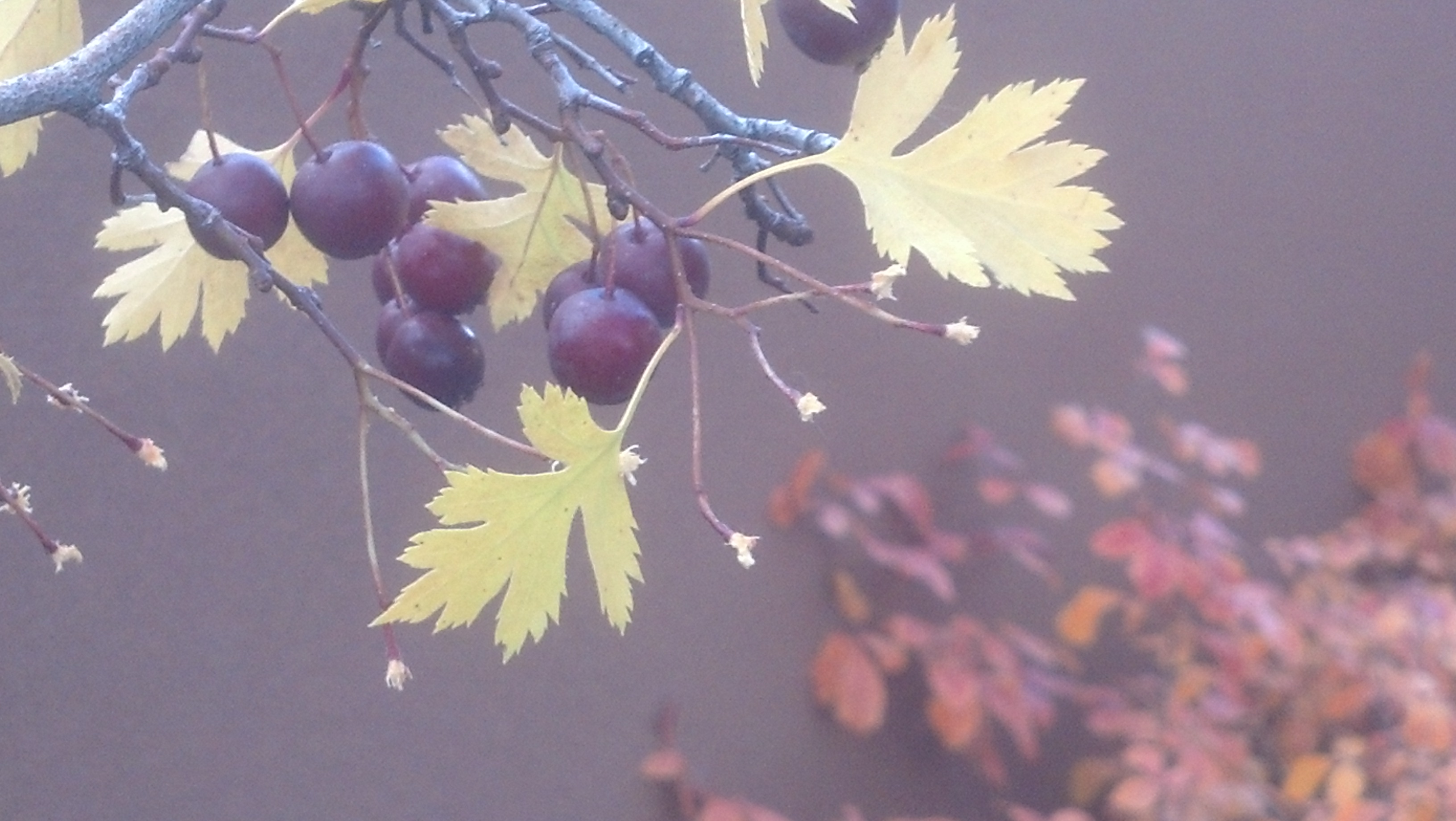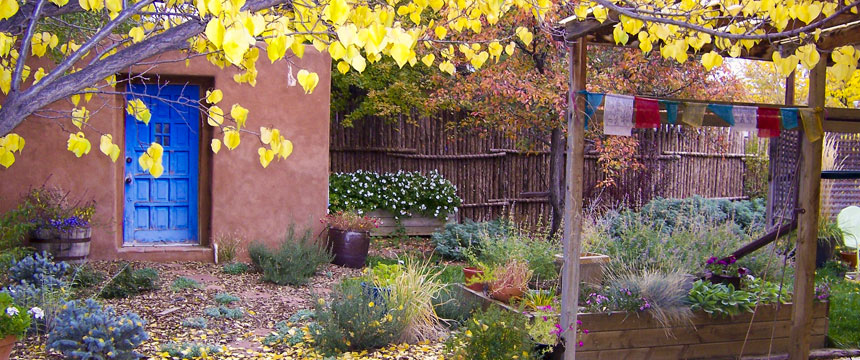The PermaDesign Weblog, with Nate Downey and Melissa McDonald!
Category: Shade
Hawthorn Berry Harvest

We have a hawthorn "tree" (Really, it's a large bush.) out in front of our design studio. Most of its yellow leaves have fallen off in this picture at right (the orange is gro-low sumac) , but you can still see
, but you can still see
the red berries. These pics were taken after we harvested the cupful below.
11/06/2012 | Edibles | Shade | (0) Comments
Plant Your Cistern!
Here's a precipitation-collection tank, or cistern, that's patially burried and hidden by a raised planter bed and a combination of beautiful and edible plants. The easiest way to see where the cistern is in this photo is to look for a brown downspout that elbows from the right post of the portal. That goes into a 650 gallon cistern from which water is pumped and distributed through the backyard with a hose. I took this shot at our a client's residence around this time of year several years ago. One of the reasons to go this route when installing a cistern is to save money on exacavation, but don't forget to figure in the cost of the wood and labor involved in the screening with the landscape timbers that make up the raised bed. You will also be limited to plants that sprawl and cover ground even with root systems that get shrunk by the tank which is only 4" to 12" below the ground.
10/26/2012 | Companion Plantings | Ecology | Energy Savings | Lawns | Outdoor Living | Shade | Water Harvesting | (0) Comments
One Lesson Learned from Double Digging: It Works!
As you may have already read, I spent a heap of time this spring double digging our garden beds. Following John Jeavons’ techniques (described in “How to Grow More Vegetables”), I mixed wheelbarrow after wheelbarrow of homemade compost deep into the soil. Although I never got the six-pack abs that I had hoped to gain from all of the upper-body exercise, I’m happy to report that the work itself has paid off.
06/01/2010 | Compost | Edibles | Outdoor Living | Shade | Windbreaks | (0) Comments
